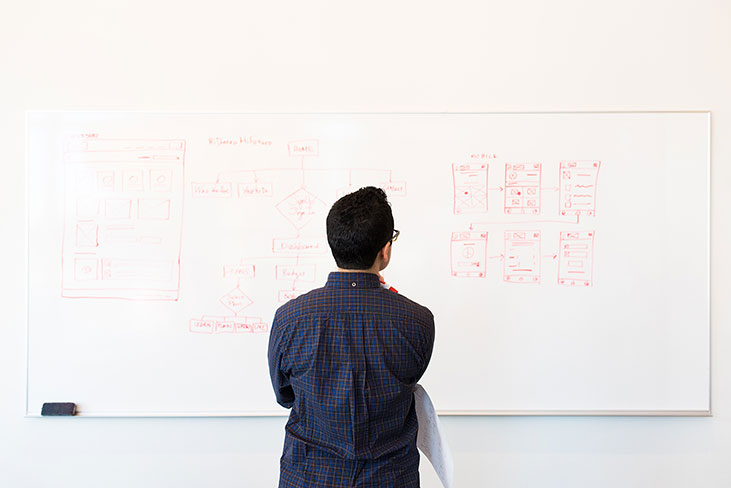A question asked by many, but one not easily answered. Here are the basics, depending on what you’re looking to make.
| Development Cost | Examples | |
| Basic app | > ~$15,000 | Calculators, Camera, Clock |
| Data-driven app | ~$15,000+* | Calendar, Weather, Stocks |
| Authentication app | ~$50,000+* | McDonald’s Loyalty App, Google Drive |
In today’s digital age, mobile applications have become an integral part of our daily lives, enabling us to connect, shop, learn, and entertain ourselves with just a few taps. Behind every successful mobile app, there’s an intricate process involving development, testing, deployment, and ongoing maintenance.
At EX Labs, your trusted web and software development agency, we understand that one of the foremost concerns for businesses and entrepreneurs is understanding the actual cost of creating and maintaining a mobile app. In this comprehensive guide, we delve into the various factors that contribute to the cost of mobile app development, as well as shed light on the often overlooked expense of maintaining an application throughout its entire life cycle.
1. Factors Influencing Mobile App Development Costs:
Creating a mobile application involves a multitude of factors that impact the overall cost. It’s important to recognize that costs can vary significantly based on the complexity of the app, its features, the platform(s) it’s built for, and the development approach. Here are some key cost-driving factors:
- App Type and Complexity: The more complex an app’s functionality and design, the higher the development costs. Basic informational apps tend to be less expensive compared to feature-rich apps with intricate user interactions, third-party integrations, and real-time updates.
- Platform(s): Developing an app for multiple platforms (iOS, Android, web) requires additional resources and can impact the overall cost. Native app development tends to be costlier than cross-platform development, which can be more cost-effective but may sacrifice some performance optimization.
- Design and User Experience: An intuitive and visually appealing design is crucial for user engagement. Design costs can vary based on the number of screens, animations, and custom graphics required.
- Third-Party Integrations: Integrating third-party services like payment gateways, social media logins, or location-based services can add to the development cost.
- Testing and Quality Assurance: Rigorous testing is essential to ensure a bug-free and seamless user experience. Testing expenses include manual testing, automated testing, and quality assurance processes.
2. Cost Breakdown: Development Phases:
A typical mobile app development process consists of several phases, each contributing to the overall cost:
- Conceptualization and Planning: Defining the app’s purpose, features, target audience, and user flow. This phase involves market research, competitor analysis, and creating wireframes. Costs include strategy and design consultations.
- Design and Prototyping: Creating the app’s visual design, user interface (UI), and user experience (UX) elements. Prototyping helps visualize the app’s functionality. Costs cover UI/UX design and prototyping tools.
- Development: Writing the code that brings the app to life. Costs include software development, programming languages, and development tools.
- Testing and Quality Assurance: Thoroughly testing the app for functionality, performance, security, and user experience. Costs include manual testing, automated testing tools, and QA processes.
- Deployment: Preparing the app for launch, submitting it to app stores, and ensuring compatibility with various devices and operating systems.
3. Ongoing Maintenance Costs:
Launching an app is just the beginning. To provide a smooth and bug-free user experience, continuous maintenance is essential throughout the app’s life cycle. Ongoing maintenance costs include:
- Bug Fixes and Updates: As technology evolves and new devices and OS versions are released, the app may require updates to remain compatible and functional.
- Security Updates: Regular security audits and updates are crucial to protect user data and maintain the app’s integrity.
- Performance Optimization: Ensuring the app remains fast, responsive, and optimized for different devices and network conditions.
- Feature Enhancements: Incorporating user feedback and introducing new features to keep users engaged and satisfied.
Conclusion:
Developing a mobile application is an investment that goes beyond the initial development phase. Understanding the various factors that influence the cost of development and the ongoing expenses of maintenance is crucial for businesses and entrepreneurs to make informed decisions. At EX Labs, we are committed to providing transparent and reliable estimates for mobile app development and maintenance. Our team of experts is here to guide you through every step of the process, from conceptualization to deployment and beyond, ensuring your app’s success in the competitive digital landscape.
Remember, the cost of mobile app development and maintenance is not just about dollars and cents; it’s an investment in your brand’s digital presence and customer engagement. Contact EX Labs today to embark on your app development journey with a partner you can trust.
